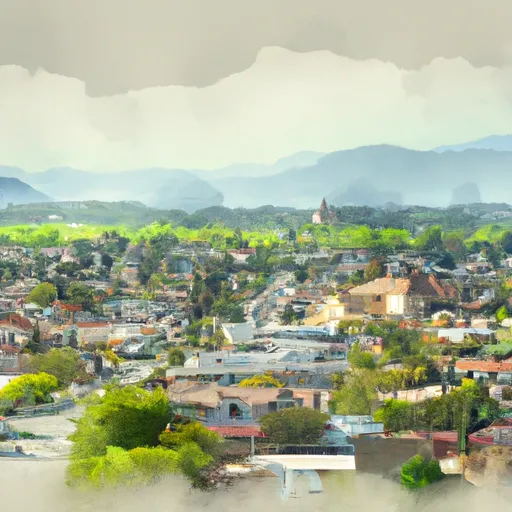-
 Snoflo Premium
Snoflo Premium
Get unlimited access to all our content
With no Ad interruptions! - Start Your Free Trial Login with existing account
Winchester
Eden Index
Climate
8.8
•
Recreation
5.5
•
Community
3.7
•
Safeguard
6.4/10

Winchester, California is a small unincorporated community located in Riverside County. It enjoys a Mediterranean climate characterized by hot, dry summers and mild, wet winters. Summers in Winchester can reach temperatures in the mid to upper 90s Fahrenheit, while winters typically range from the mid-40s to mid-60s Fahrenheit. The area receives an average annual precipitation of around 12 inches, with most rainfall occurring during the winter months.
As for hydrology constituents, Winchester is in close proximity to Lake Skinner, a reservoir located in the nearby Temecula Valley. Lake Skinner serves as a vital water source for the region, offering recreational activities such as boating, fishing, and camping. The lake is also known for its picturesque hiking and biking trails that wind through the surrounding hills and provide stunning views of the valley.
In addition to Lake Skinner, Winchester offers diverse outdoor recreation opportunities, including nearby parks and nature reserves. Visitors can explore the Santa Rosa Plateau Ecological Reserve, home to unique plant and animal species, and enjoy activities such as hiking, horseback riding, and birdwatching. With its pleasant climate and access to natural landscapes, Winchester provides ample opportunities for outdoor enthusiasts to experience the beauty of Southern California.
What is the Eden Index?
The Snoflo Eden Index serves as a comprehensive rating system for regions, evaluating their desirability through a holistic assessment of climate health, outdoor recreation opportunities, and natural disaster risk, acknowledging the profound impact of these factors on livability and well-being.
Climate Health Indicator (CHI): 8.8
Winchester receives approximately
320mm of rain per year,
with humidity levels near 46%
and air temperatures averaging around
18°C.
Winchester has a plant hardyness factor of
9, meaning
plants and agriculture in this region tend to thrive here all year round.
By considering the ideal temperature range, reliable water supplies, clean air, and stable seasonal rain or snowpacks, the Climate Health Indicator (CHI) underscores the significance of a healthy climate as the foundation for quality living.
A healthy climate is paramount for ensuring a high quality of life and livability in a region, fostering both physical well-being and environmental harmony. This can be characterized by ideal temperatures, reliable access to water supplies, clean air, and consistent seasonal rain or snowpacks.
Weather Forecast
Streamflow Conditions
Laguna-San Diego Coastal
Area Rivers
Laguna-San Diego Coastal
Snowpack Depths
Laguna-San Diego Coastal
Reservoir Storage Capacity
Laguna-San Diego Coastal
Groundwater Levels
Recreational Opportunity Index (ROI): 5.5
The Recreational Opportunity Index (ROI) recognizes the value of outdoor recreational options, such as parks, hiking trails, camping sites, and fishing spots, while acknowledging that climate plays a pivotal role in ensuring the comfort and consistency of these experiences.
Access to outdoor recreational opportunities, encompassing activities such as parks, hiking, camping, and fishing, is crucial for overall well-being, and the climate plays a pivotal role in enabling and enhancing these experiences, ensuring that individuals can engage in nature-based activities comfortably and consistently.
Camping Areas
| Campground | Campsites | Reservations | Toilets | Showers | Elevation |
|---|---|---|---|---|---|
| Dripping Springs | 23 | 1,644 ft | |||
| March ARB Military | None | 1,509 ft | |||
| Observatory | 37 | 4,857 ft | |||
| Guajome Park | 35 | 103 ft | |||
| Lake Skinner | None | 1,514 ft | |||
| Fry Creek | 20 | 4,914 ft | |||
| Lake Perris State Rec Area | 351 | 1,600 ft | |||
| Yucaipa Regional Park | 51 | 2,658 ft | |||
| Bogart Park | 26 | 3,171 ft |
Catastrophe Safeguard Index (CSI):
The Catastrophe Safeguard Index (CSI) recognizes that natural disaster risk, encompassing floods, fires, hurricanes, and tornadoes, can drastically affect safety and the overall appeal of an area.
The level of natural disaster risk in a region significantly affects safety and the overall livability, with climate change amplifying these risks by potentially increasing the frequency and intensity of events like floods, fires, hurricanes, and tornadoes, thereby posing substantial challenges to community resilience and well-being.
Community Resilience Indicator (CRI): 3.7
The Community Resilience Indicator (CRI) recognizes that education, healthcare, and socioeconomics are crucial to the well-being of a region. The CRI acknowledges the profound impact of these elements on residents' overall quality of life. By evaluating educational resources, healthcare accessibility, and economic inclusivity, the index captures the essential aspects that contribute to a thriving community, fostering resident satisfaction, equity, and social cohesion.

